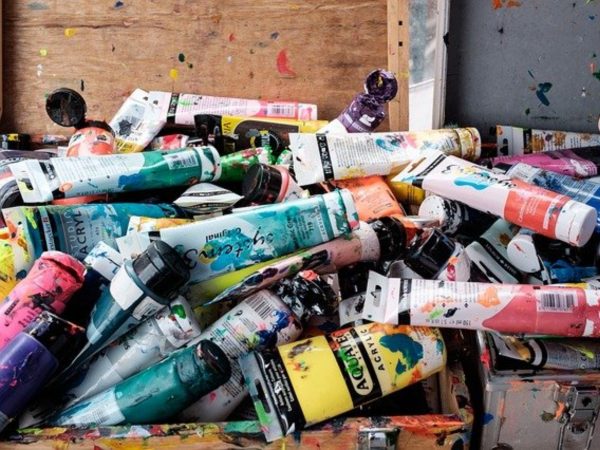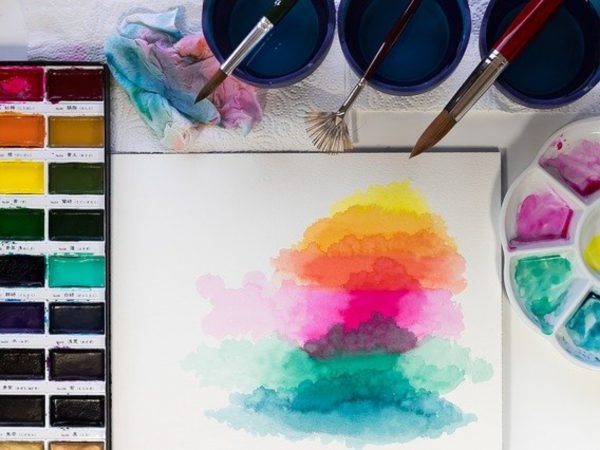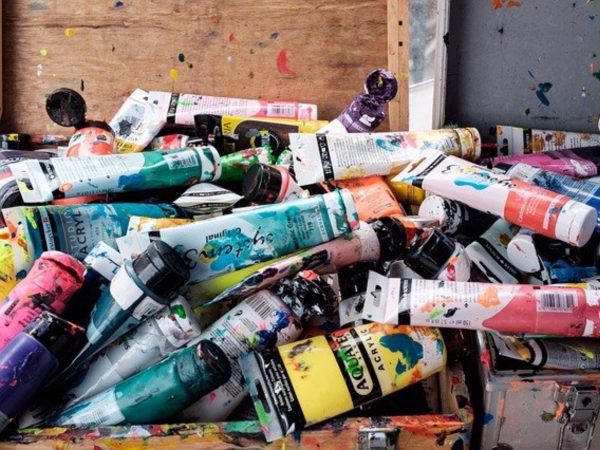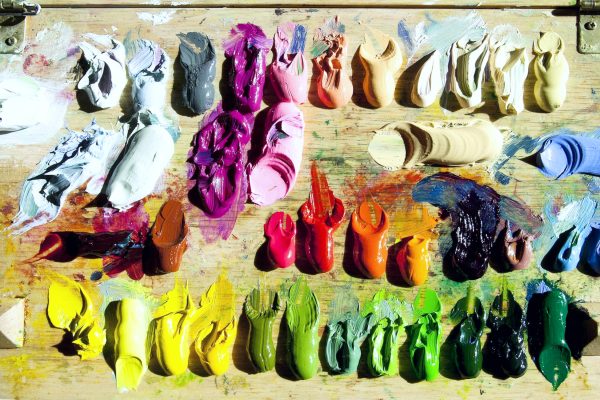Examine Differences in Paint to Choose the Right One for You
Do you want to start painting, but find it difficult to know what paint to choose? In this article, we are going to explore the differences between acrylic, oil and watercolor paints to help you choose a paint that's right for you! It can be time-consuming and expensive to try out art supplies and decide what you like by trial-and-error. Use this guide to skip a few steps and save time and money. Whether you desire to become the next Van Gogh or are seeking a fulfilling new hobby, matching your preferences and personality to the paint can go a long way toward having a fantastic art experience.
Adaptability of Acrylic Paints
Acrylic paints are:
- Easy to use, forgiving and versatile (they play well with mixed-media)
- A snap to clean up with mild soap and water
- Less complex than oils or watercolors
- Affordable for a limited budget
- Fast-drying
You might enjoy acrylic paints if:

- Flexibility is key and you like to experiment
- You don’t like to do a lot of planning before you get started
- You like to paint fast and see results quickly
- Being able to repeatedly paint over mistakes appeals to you
- You don’t mind that some colors can darken as they dry
- You are sensitive to the chemicals used in oil painting
What you need to get started with acrylic painting:
- Acrylic paints
- I suggest starting with Titanium White, Cadmium Yellow, Cadmium Red, Alizarin Crimson, Phthalo Blue, Burnt Sienna and Ivory Black, or buy a beginner’s set
- Paintbrushes
- Paper, wood or canvas to paint on
- Palette or paper plate
- Rag or paper towels
- A vessel with water
- Mild soap for clean up
- A lesson on acrylic painting from LinkedIn Learning (free with your library card)
Timelessness of Oil Paints
Oil paints are:
- Versatile and easy to blend with linseed oil or turpentine
- Known for their layering abilities and variation of texture
- More complex than acrylics, but require less planning than watercolors
- Slower-drying
You might enjoy oil paints if:
- Longevity is important to you
- Oil paintings can last for hundreds of years if stored properly
- Your budget allows for more expensive materials
- You want something you can leave for a long time and come back to
- Clean up time and chemicals don’t bother you (odorless solvents may be an option if you are bothered by chemicals)
- You are interested in learning traditional painting techniques used by the old masters
What you need to get started with oil painting:
- Oil paints
- I suggest starting with Titanium White, Yellow Ochre, Cardinal Yellow, Viridian Green, Cardinal Red, Alizarin Crimson, Burnt Umber and Ivory Black, or buying a beginners set
- Paintbrushes
- A large flat brush, a medium fan brush, a medium round brush and several various small to medium flat and filbert brushes, or purchase a beginner’s set
- Turpentine or odorless solvent to dilute the paint and make it more fluid
- Always work in a well-ventilated area
- Linseed oil to counter the solvent and increase the transparency of your paint
- Separate vessels for the solvent and linseed oil
- Pre-prepared canvas
- Palette
- Palette knives for mixing paint
- An easel
- Oil paint cleaner
- Paper towels or a rag
- Old clothes to paint in
- Oil painting 101 class on CreativeBug (free with your library card)
The Nature of Watercolor Paints
Watercolor paints are:
 Inexpensive to start
Inexpensive to start- Easy to clean and maintain
- Free of harsh chemicals or solvents
- Fast-drying and can be layered to change the color or intensity
- Surprising and unpredictable
- It helps to plan when working with watercolors
You might enjoy watercolor paints if:
- Having a plan in place is important to you, but you also like “going with the flow”
- You like to work without an easel
- Watercolorists often paint on special paper taped to a board
- Being detail-oriented is your cup of tea
What you need to get started with watercolor paints:
- Watercolor paints
- I suggest starting on an inexpensive pan set to learn technique before upgrading to more expensive pans or tubes
- Watercolor paper
- Brushes
- A small round brush, an angled brush and a wide flat brush will get you started
- A pencil with an eraser
- A vessel to hold water
- Acid-free artist tape
- A board
- Paper towels
- Mild soap for brush clean up
- A digital stroll through the art gallery for inspiration
Getting Started
Choose a new paint medium that appeals to your personality and allow yourself to get a feel for the paint before focusing on bigger aspects like technique, composition, color and value. Once you have acquired your materials, start by experimenting on a scrap piece of paper or small canvas. Take the time to enjoy yourself and allow space for creativity and play. Be patient with yourself – painting is a learned skill that requires practice! There are endless opportunities to learn more about painting. If you need project ideas or feel like learning more serious techniques, check out the books I suggest below. You'll also find excellent video classes on Creativebug and LinkedIn Learning, which are free with your library card.loading...













